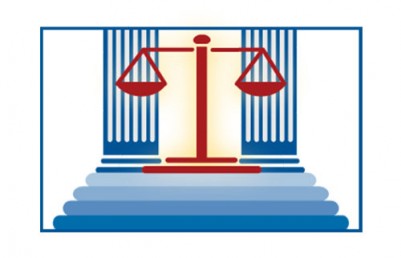Key Amendments to the New York Rules of Professional Conduct
Earlier this year the Presiding Justices of the four Appellate Divisions issued a Joint Order approving amendments to the New York Rules of Professional Conduct. The amendments, which were proposed last year by the New York State Bar Association Committee on Standards of Attorney Conduct (COSAC), significantly alter Rule 1.10, which deals with the imputation of conflicts of interest, and Rule 3.4, regarding fairness to opposing parties and counsel.
Each of these changes is discussed below.
Changes Rule 1.10 (Imputation of Conflicts of Interest)
Rule 1.10(a) and the imputation of personal interest conflicts
Prior to its amendment, Rule 1.10(a) stated: “While lawyers are associated in a firm, none of them shall knowingly represent a client when any one of them practicing alone would be prohibited from doing so by Rule 1.7 [concurrent representation conflicts], 1.8 [special conflicts of interest] or 1.9 [successive representation conflicts], except as otherwise provided therein.” What this meant, as a general rule, was that if one lawyer in a firm was conflicted from representing a client, regardless of the reason, then every other lawyer in the firm would be similarly prohibited from undertaking the representation, regardless of the degree of separation between the conflicted lawyer and the other lawyers in the firm.
Suppose, for example, that Lawyer A is approached about taking on a litigation adverse to a company in which Lawyer A’s spouse owns shares. Lawyer A may be prohibited from taking on the representation if there is a significant risk that Lawyer A’s judgment on behalf of the potential client would be limited by Lawyer A’s financial interest in the company (either directly or indirectly). See NY Rule 1.7(a)(2) (prohibiting representation where “there is a significant risk that the lawyer’s professional judgment on behalf of a client will be adversely affected by the lawyer’s own financial, business, property or other personal interests.”) Under the old version of Rule 1.10, Lawyer A’s conflict would be imputed to the rest of Lawyer A’s firm, regardless of its size or the impact that Lawyer A’s conflict actually had on the other lawyers in the firm. In other words, if there was a significant risk that Lawyer A’s judgment could be impaired by the conflict, then that significant risk was imputed to the rest of the firm.
The amendments to Rule 1.10(a) make clear that these type of personal interest conflicts generally will not be imputed to the rest of the firm so long as (1) the conflict is “based on a lawyer’s own financial, business, property or other personal interests within the meaning of Rule 1.7(a)(2)” and (2) a reasonable lawyer would conclude that there is no significant risk that the representation by the other lawyers in the firm would be materially limited or that the independent judgment of those lawyers would be adversely effected. See NY Rule 1.10(a)(1)-(2). This amendment gives law firms more flexibility to assess personal interest conflicts on a case-by-case basis and determine whether the remainder of the firm’s lawyers are actually conflicted.
Rule 1.10(b) and a law firm’s retention of former client information
The Courts also updated Rule 1.10(b) to clarify that when all of the lawyers who previously worked on a matter have left the firm, a law firm will not be disqualified from a representation simply because the firm is still in possession of files related to the former client. While the prior version of Rule 1.10(b) prohibited a representation if “the firm” had confidential information belonging to the former client, the amended version of Rule 1.10(b) only mandates disqualification if “any lawyer remaining at the firm has actual knowledge or, or has accessed” the former client’s confidential information.
Rule 1.10(c) and screening of lateral lawyers
The Courts amended Rule 1.10(c) to expressly permit screening of lateral lawyers in certain instances. This is a major development. Before the amendment, Rule 1.10 would impute a lateral lawyer’s conflicts to the new firm in all instances except where the lateral lawyer did not acquire confidential information that was material to the matter at issue. In practice, this meant that, absent the narrow exception described above, if a lateral lawyer was conflicted from a representation because of the lawyer’s affiliation with their prior firm, the lateral lawyer’s conflict would be imputed to the remainder of the new firm and could be used as a basis to disqualify the new firm. The main criticism of the earlier version of the rule was that it was unduly restrictive and created unnecessary obstacles that restricted the movement of lawyers between firms. The rule was also criticized for not recognizing the practical realities of modern-day legal representation where different offices or departments of law firms could easily carry out representations while adhering to appropriate screening measures.
The recent amendments to Rule 1.10(c) bring the rule closer to Model Rule 1.10(a)(2), which allows screening for lateral lawyers to avoid imputation of conflicts caused by a lawyer joining a new firm. While Model Rule 1.10(a)(2) permits screening of lateral lawyers under all circumstances, the amended version of New York Rule 1.10(c) permits screening of lateral lawyers except “where the matter is a litigation, arbitration, or other adjudicative proceeding and the newly associated lawyer, while associated with the prior firm, either (i) substantially participated in the management and direction of the matter, or (ii) had substantial decision-making responsibility in the matter on a continuous day-to-day basis.” In other words, although the new Rule 1.10(c) allows screening to prevent the imputation of conflicts caused by lateral lawyers in many circumstances, it will not prevent imputation of conflicts from a lateral lawyer who was a lead lawyer in a litigation matter and has decided to join the firm on the other side of the matter. Notwithstanding this limitation in the Rules, it remains to be seen whether courts, which have generally approved screening, will draw the same distinction when evaluating motions to disqualify. Accord Hempstead Video, Inc. v. Incorporated Village of Valley Stream, 409 F.3d 127, 132 (2d Cir. 2005); Maricultura del Norte, S. de R.L. de C.V. v. Worldbusiness Capital, Inc., 2015 WL 1062167 (S.D.N.Y. Mar. 9, 2015).
As noted, this is a significant development in the New York Rules. Lawyers and law firms regularly struggle to navigate the complicated web of conflicts when discussing a lateral transition. How best to do that is the subject of another article, however, the change in the Rules to allow screening to cure many of the run-of-the-mill conflicts that come up in lateral transitions is a significant step forward.
Amendments to Rule 3.4
The Courts also amended Rule 3.4, which is titled “Fairness to opposing party and counsel,” to add a new subsection (f). Rule 3.4(f) provides that a lawyer shall not “request a person other than a client to refrain from voluntarily giving relevant information to another party unless: (1) the person is a relative or an employee or other agent of a client; and (2) the lawyer reasonably believes that the person’s interests will not be adversely affected by refraining from giving such information.”
Rule 3.4(f) is identical to Model Rule 3.4(f), however, when the New York Rules were adopted in 2009, Rule 3.4(f) was not included. According to the explanation in the NYSBA proposal to the Courts with the recent rule amendments, there is no legislative history that explains why Rule 3.4(f) was not adopted previously. See New York State Unified Court System, Request for Public Comment – Proposed amendments to Rule 1.10 and Rule 3.4 of the Rules of Professional Conduct (July 2, 2024) available at https://www.nycourts.gov/LegacyPDFS/rules/comments/pdf/RequestForPublicComment-RulesOfProfessionalConduct-070224.pdf; see also NYCBA Formal Op. 2009-5 (2009) (“there is no rulemaking history shedding any light on the omission [of Rule 3.4]”). As the NYSBA proposal reasoned, the prohibition in Rule 3.4(f) is intended to reinforce the view that “witnesses do not ‘belong’ to any particular party and that ‘fair competition in the adversary system is secured by prohibitions against destruction or concealment of evidence, improperly influencing witnesses, obstructive tactics in discovery procedure, and the like.’” Id. (quoting ABA Model Rule 3.4, Cmt. [1]). In conjunction with the adoption of Rule 3.4(f), NYSBA also approved an accompanying comment to Rule 3.4, which advises that “A lawyer may inform any person of the right not to be interviewed by any other party.”
Conclusion
The above amendments to the Rules will bring much-needed changes to the rules governing the imputation of conflicts and fairness in adversary proceedings. In particular, these changes recognize the practical realities of the practice of law and, with respect to the rules governing the imputation of conflicts, the need to balance the ability for lawyers to change firms with lawyers’ obligations to preserve loyalty and to protect client confidences.
Tyler Maulsby is the Deputy Managing Partner of Frankfurt Kurnit Klein & Selz PC and a member of the firm’s Legal Ethics and Professional Responsibility practice group. This article originally appeared in the April 1, 2025 edition of The New York Law Journal and is reprinted with permission. Further duplication without permission is prohibited. All rights reserved.
Related Posts
« Placing Limits on Judicial Speech: The Disciplinary Case Against Judge Ponsor — by Ron Minkoff







